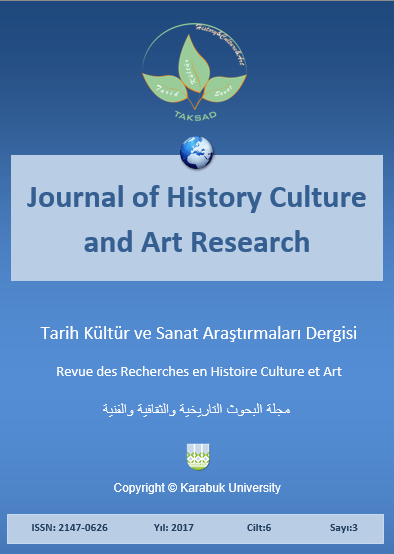A Study of Political Situation and Relations of Ardalan Dynasty in Qajar Era
DOI:
https://doi.org/10.7596/taksad.v6i3.1001Keywords:
Kurdistan, Ardalan dynasty, Qajars, Military function, Border protection function, Economic function.Abstract
Iran’s Kurdistan in general and Ardalan’s Kurdistan in Qajar era in particular was of paramount importance due to its geographic situation as it was located on Iran’s western borders with Ottoman Empire and Baban states.
When Qajar government came to power in Iran, Kurdistan region and its environs, was under the leadership of a local dynasty called Ardalan. From the second half of the seventh century of Hijra to the thirteenth century of Hijra, this dynasty in points of its political life dominated parts of Hamadan, Kermanshah as well as some regions of Lorestan besides reigning Kurdistan. Swearing their allegiance to the central government during the reign of First Shah Abbas, Ardalan warriors turned to a covering power between two Iranian and Ottoman empires and offered various services to Iran from Safavid era to Qajar era. Ottomans who had succeeded to prevail over almost three-fourth of Kurdish regions during their quarrels with Safavids were always interested in owning Kurdistan region. Thus, they decided to found the Baban state in Shahrzur region (now is known as Sulaymaniyah) in the eleventh century of Hijra in order to expand its influence in this region and reaches a power equilibrium against Ardalan Dynasty in Iran. From this time on, these two local powers were serious political rivals and each one was in some way following the orders issued by their respective central government.
References
Afushtei Natanzi, Mahmud Ibn Hedaytullah (1994). Neqavat al-Athar, edited by Ehsan Ishraqi, Tehran: Publication House of Translation and Book.
Ardalan, Mastureh (n.d.). A History of Ardalan Dynasty. Edited by Nasir Azadpur, Tehran: Hazar Publication.
Ardalan, Shirin (2008). Kurdish Tribe of Ardalan: Iran and Ottoman Empire Conflicts. Translated by Murtaza Ardalan. Tehran: Iran History Publication.
Babani, Abdulqader (1998). A History of Kurds. Edited by Muhammad Rauf Tavakoli. Second Edition.
Badlisi, Sharafkhan (1998). Sharafnameh or a Detailed History of Kurdistan. Edited by Vladimir Zurnov, First Edition. Tehran: Asatir.
Bahrami, Ruhallah & Muzaffari, Parastoo (2011). Function, Divisions and Structure of Ardalan Emirate in Qajar Era. Historical Researches Journal, Isfahan University, New Edition, Year 3, Volume 2: 51-72.
Borzuei, Mojtaba (1999). Political Situation of Kurdistan (from 1258 to 1325 Solar Year), First Edition, Tehran: Fikr-e No.
Dusarsi Comte (1983). Iran in 1831-1840. Translated by Ehsan Eshraqi, Second Edition, Nashr-e Daneshqahi Center.
Huzni, Hussein (2005). History of Suran Commanders. Translated by Reza Kheiri Mutlaq, Tehran: Ministry of Foreign Affairs.
Lambton, A. N. S. (1996). Iran in Qajar Era (A Discourse on Iranology). Translated by Simin Fasihi. Tehran: Javdan Kherad.
Mardukhi Ruhani, Ehsan (2008). Proceedings of International Conference on Ardalan Dynasty, Sanandaj.
Mashayekh Freydooni, Azarmidokht (1990). Border Problems of Iran and Iraq and their Impact on the relations of the two countries, Tehran: Amirkabir.
Sanandaji, Mirza Shukrullah & Tuhfeyah, Nasiri (1998). A History of Kurdistan. Edited by Heshmatullah Tabibi, First Edition. Tehran: Amirkabir.
Turkaman, Eskandar Beyk, Alam Arayeh (2004). Abbasi History. Edited by Iraj Afshar, Second Edition. Tehran: Amirkabir.
Downloads
Published
How to Cite
Issue
Section
License
All papers licensed under Creative Commons 4.0 CC-BY.- Share — copy and redistribute the material in any medium or format
- Adapt — remix, transform, and build upon the material for any purpose, even commercially.
Under the following terms:
Attribution — You must give appropriate credit, provide a link to the license, and indicate if changes were made. You may do so in any reasonable manner, but not in any way that suggests the licensor endorses you or your use.
- No additional restrictions — You may not apply legal terms or technological measures that legally restrict others from doing anything the license permits.







